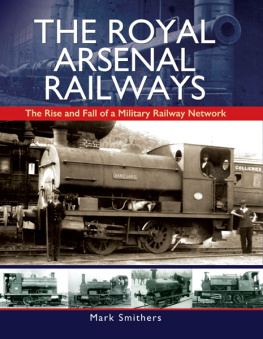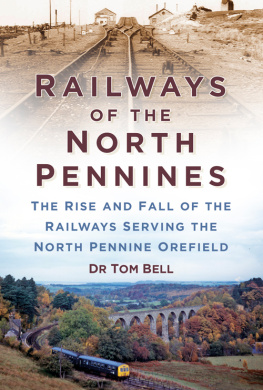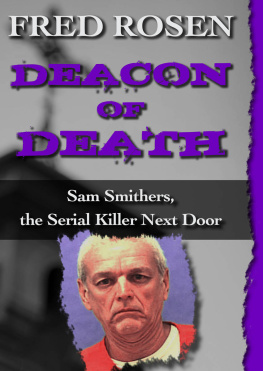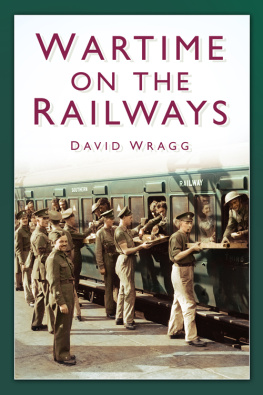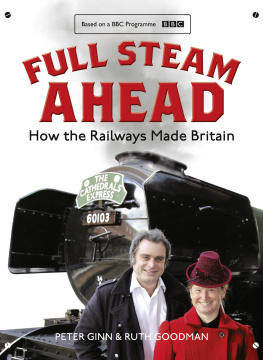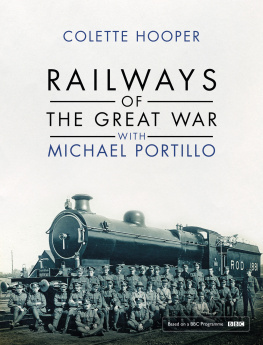Smithers Mark - The Royal Arsenal Railways
Here you can read online Smithers Mark - The Royal Arsenal Railways full text of the book (entire story) in english for free. Download pdf and epub, get meaning, cover and reviews about this ebook. year: 2016, publisher: Pen & Sword Books, genre: Science fiction. Description of the work, (preface) as well as reviews are available. Best literature library LitArk.com created for fans of good reading and offers a wide selection of genres:
Romance novel
Science fiction
Adventure
Detective
Science
History
Home and family
Prose
Art
Politics
Computer
Non-fiction
Religion
Business
Children
Humor
Choose a favorite category and find really read worthwhile books. Enjoy immersion in the world of imagination, feel the emotions of the characters or learn something new for yourself, make an fascinating discovery.
- Book:The Royal Arsenal Railways
- Author:
- Publisher:Pen & Sword Books
- Genre:
- Year:2016
- Rating:5 / 5
- Favourites:Add to favourites
- Your mark:
- 100
- 1
- 2
- 3
- 4
- 5
The Royal Arsenal Railways: summary, description and annotation
We offer to read an annotation, description, summary or preface (depends on what the author of the book "The Royal Arsenal Railways" wrote himself). If you haven't found the necessary information about the book — write in the comments, we will try to find it.
The Royal Arsenal Railways — read online for free the complete book (whole text) full work
Below is the text of the book, divided by pages. System saving the place of the last page read, allows you to conveniently read the book "The Royal Arsenal Railways" online for free, without having to search again every time where you left off. Put a bookmark, and you can go to the page where you finished reading at any time.
Font size:
Interval:
Bookmark:
First published in Great Britain in 2016 by
Pen & Sword Transport
an imprint of
Pen & Sword Books Ltd
47 Church Street
Barnsley
South Yorkshire
S70 2AS
Copyright Mark Smithers 2016
ISBN: 978 1 47384 400 1
PDF ISBN: 978 1 47384 403 2
EPUB ISBN: 978 1 47384 401 8
PRC ISBN: 978 1 47384 402 5
The right of Mark Smithers to be identified as the Author of this Work has been asserted by him in accordance with the Copyright, Designs and Patents Act 1988.
A CIP catalogue record for this book is available from the British Library
All rights reserved. No part of this book may be reproduced or transmitted in any form or by any means, electronic or mechanical including photocopying, recording or by any information storage and retrieval system, without permission from the Publisher in writing.
Typeset in Ehrhardt by
Mac Style Ltd, Bridlington, East Yorkshire
Printed and bound by Replika Press Pvt. Ltd.
Pen & Sword Books Ltd incorporates the imprints of Pen & Sword Archaeology, Atlas, Aviation, Battleground, Discovery, Family History, History, Maritime, Military, Naval, Politics, Railways, Select, Transport, True Crime, and Fiction, Frontline Books, Leo Cooper, Praetorian Press, Seaforth Publishing and Wharncliffe.
For a complete list of Pen & Sword titles please contact
PEN & SWORD BOOKS LIMITED
47 Church Street, Barnsley, South Yorkshire S70 2AS, England
E-mail:
Website: www.pen-and-sword.co.uk
Contents
Introduction
A Brief History of the Royal Arsenal
T he full history of the Royal Arsenal Woolwich began over 300 years ago, at an area on the banks of the Thames that was used as a store in support of the dockyards at Greenwich, Deptford and Woolwich. Records show that an ordnance store was in existence as early as 1565 supplying guns, cannonballs and gun carriages to the ships under construction in the Thames reaches. Built on the land known locally as The Warren (from its rabbit warren of small streets and alleys), proof butts were built and cannons were tested by General Blake and his ordnance officers. In 1667 Prince Rupert was instructed to prepare a gun battery on the riverside, facing north in order to provide a defence against the possible threat of the Dutch Fleet approaching London up the river.
Situated between the Gun Wharf and The Warren was a manor house known as Tower House, later known as Tower Place. By 1670 the Crown had decided to expand its operations on the site and in 1671 purchased this house and 31 acres of land from Sir William Pritchard. The spacious grounds were soon to be covered with cannonballs, cannons and gun carriages destined for the ships being built or repaired in the Royal Dockyards. Soon the Great Barn at Greenwich was built in the grounds of The Warren and in 1696 two Royal Laboratories (East and West Pavilions) were constructed to manufacture gunpowder, ammunition and other pyrotechnics. In the same year a Comptroller of Fireworks was appointed to preside over the munitions activities and by then the Carriage Department was in existence. At that time the Crown did not manufacture its own cannon, and purchased or captured weapons of war were often fitted onto new or refurbished gun carriages. There are firm references to the Carriage Department of 1680, and the old carriage-yards appear on plans of The Warren compiled by General Borgard, first commandant at Woolwich Barracks.
Up to 1716, the Crown had always preferred that the founding of brass and iron guns should be carried out by private manufacturers, and much of this work was done by a foundry at Moorfields in the City of London. In that year a serious accident occurred during the remelting of captured French cannon, resulting in the death of seventeen persons, including the foundry owner Mr John Bagley. Following this disaster, the Crown decided to exercise more control over gun-founding and gave approval for a Royal Brass Foundry to be built at The Warren. Designed by Sir John Vanbrugh, this was completed in 1717 and a young Swiss gentleman, Andrew Schalch, was appointed as Master Founder. At the same time other important developments were taking place in this area, including the formation of the first two companies of Royal Artillery. The Great Pile buildings were erected between 1717 and 1720, surrounding Artificers Court and Basin Court and used as storehouses and workshops. In 1764 a sundial was erected over the main entrance, leading to the name Dial Square being given to this part of The Warren. Today it is a very pleasant enclosed green that may be viewed from Beresford Square. During the 1970s the Royal Brass Foundry was extensively renovated and is the Royal Arsenals only Grade I listed building. It is said to have been one of the finest cannon foundries in Europe during the eighteenth century.
In 1741, part of Tower Place was taken over for use as a military academy for the instruction of young officers belonging to the Royal Artillery and Royal Engineers. The original academy remained in use until 1806, when the Royal Military Academy opened on Woolwich Common. It was not until 1805, following a visit by George III, that, at his suggestion, The Warren was officially named the Royal Arsenal. During the period 17761856 much new building work was carried out, mostly by convict labour from the prison hulks lying at moorings in the Thames. Their accomplishments included such labour-intensive projects as digging the canal, constructing the lock gates, building the Arsenal wall, the T Pier and the Iron Pier.
Iron guns were not made in the Royal Arsenal until 1855, when the Armstrong Gun Factory was built to boost production for the Crimean War. Was it just coincidence ten years later that a rival gun foundry was built on the Greenwich Peninsula (where the Millennium Dome now stands) under the control of a Mr Blakely and Mr Bessemer? This foundry was financed with money from the international opium trade; its objective was to make guns to match those of the Woolwich Arsenal and to sell them abroad. Henry Bessemer, who developed the Bessemer converter for steel manufacture, had become interested in Blakelys manufacturing process and they became partners. Unfortunately for Blakely, shortly after 1865 the money ran out and he was soon to die in mysterious circumstances while travelling in Peru.
The inherent danger of the Arsenal close to the Crossness Sewage Outfall Works was highlighted in July 1860. The Engineers Department of the Metropolitan Board of Works wrote to the War Office thus: On two occasions during the past month, shot from the new practice ranges at Plumstead Marshes passed over the workmen constructing the Southern Outfall sewer. From this letter it took until December 1860 to effect a solution to the problem of stray cannonballs (The Crossness Engine Trust Record, Volume 8, No. 4).
From within the walls of Plumstead Road another legend was also to emerge: Arsenal FC. In late 1886 a gaggle of workers from the Woolwich Arsenal factory decided to form a football team, led by munitions worker David Danskin from Kirkcaldy in Fife. They called themselves Dial Square as a reference to the sundial atop the entrance gates to the factory. Word got around and fifteen men came forward, each prepared to pay sixpence to help start up a club. Danskin added another three shillings himself and the club bought a football.
It was October 1886. Dial Square won their first game against Eastern Wanderers on the Isle of Dogs. This small group of Scots sowed the seed that would grow into one of the most famous names in football. After that first 60 result the team met in the Royal Oak pub on Christmas Day 1886, next to Woolwich Arsenal station, trying to decide how to obtain kit. This was resolved by one of the original group who was a Nottingham Forest player; through his contacts they obtained a complete set of red shirts. As they sat in the Royal Oak, the founding fathers chose a new name; they combined the name of the pub with their place of work: Royal Arsenal. It was far grander than Dial Square and would be the clubs name until 1891 when Woolwich Arsenal was formally adopted.
Next pageFont size:
Interval:
Bookmark:
Similar books «The Royal Arsenal Railways»
Look at similar books to The Royal Arsenal Railways. We have selected literature similar in name and meaning in the hope of providing readers with more options to find new, interesting, not yet read works.
Discussion, reviews of the book The Royal Arsenal Railways and just readers' own opinions. Leave your comments, write what you think about the work, its meaning or the main characters. Specify what exactly you liked and what you didn't like, and why you think so.

